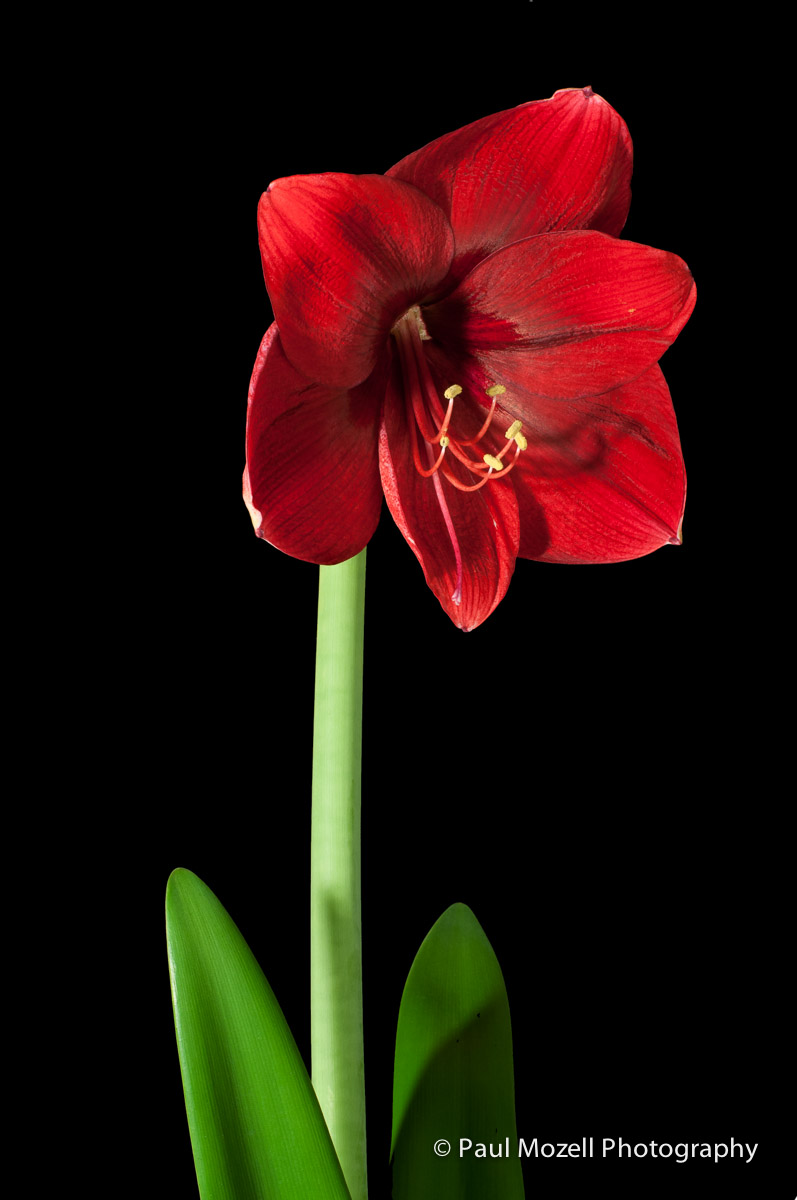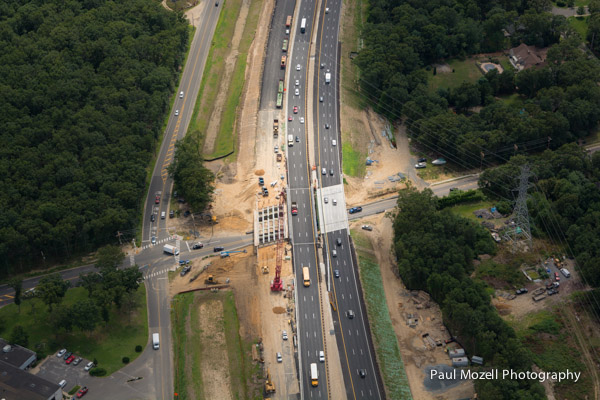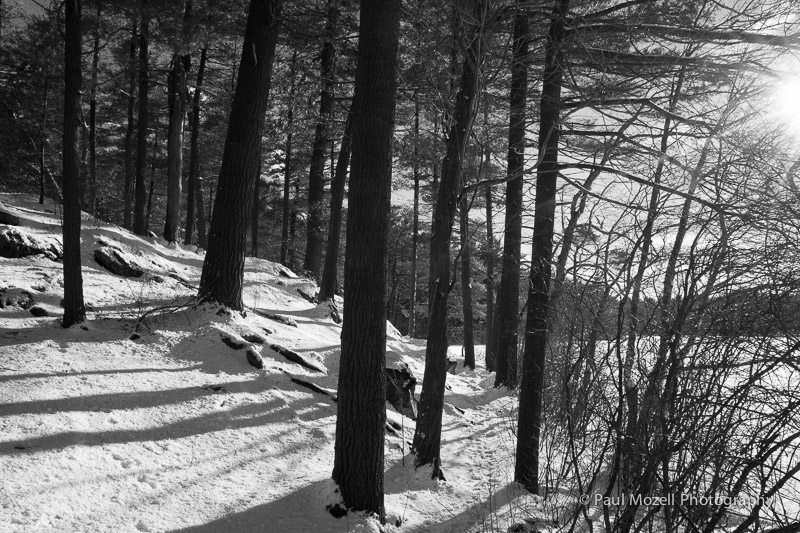Category: Instruction
Amarylis in The Dining Room

This was lit with one CFL bulb in a five dollar gooseneck, hardware store lamp clamped to a light stand. The only fancy gear was a 30 inch reflector disk on a stand. The background was a length of plain black clothe hung from the ceiling with 2 pushpins. Oh yes, it was 3 exposures combined to maximize front to rear sharpness.
Aerial Photos in the Garden State

Yesterday I had the pleasure of flying over Toms River, New Jersey, where I had been retained to photograph a bridge on the Garden State Parkway. My client builds temporary bridges to support emergency or planned construction of highway sections. Recently, I’ve photographed bridges on Martha’s Vineyard, the Merrimack River, and The Connecticut River. After shooting the bridge from the ground, I went to a local airport where I had arranged a private flight with an instructor and a Cessna 172, single-engine, top-wing airplane. I was impressed that my pilot Tom asked if I wanted the left or the right seat. He observed that since most people have a preference to turn one way or the other, that photographers he’s flown with have a preference for left or right. No planes were queued up at 2 PM so we headed straight for the runway and took off. We flew east over some of New Jersey’s vast Pine Barrens, and in the distance saw Lakehurst, NJ, the town made famous by the Hindenberg disaster. Atlantic City was visible about 30 miles away to the south. The Toms River section of the Garden State Parkway has multiple construction sites and from 1500 feet they all look similar. Had I not visited my client’s job site earlier in the day, finding the right spot would have been challenging. Finally I spotted the right cluster of trucks and heavy equipment. Tom dropped the airspeed down to about 125 and I opened up the top-hinged window on my left. Before the flight Tom removed a small restraining arm from the window so that it would open far enough to give full clearance for my camera. I ensured that I had a good grip on the Nikon D7100 and its strap before I pointed the wide-angle zoom toward the ground. As the pilot banked the plane to the left, making small right circles around the site below, I was perfectly positioned to get the shots I needed. I took care not to stick the lens beyond the edge of the window frame where the strong winds would buffet the camera and blur the shots. Based on prior experience I set my shutter speeds between 500th and 1200th of a second. I took care not to rest my elbows or any part of my arms on the plane’s door—which would transmit the intense vibration of the plane into the camera. I punched off a 100 or so frames with an 18-50mm lens, bracketing shutter speeds throughout. I was confident that the even light of mid-day would not pose a challenge for the camera’s advanced metering system. After a few loops around “the target” with the short lens I switched to a 70-300. I’d considered taking a 70-200 but in the end opted for the lens with the shorter overall length. In hindsight, the heavier lens might have been easier to hold steady. Real aerial photographers sometimes use gyroscopic-balanced systems for stabilizing the camera. I had to…
Tree Silouette: First Full Day of Winter
A cold and very windy day at Appleton Farms in Ipswich was great for tree silhouettes. Five folks joined me on this first excursion of the Meetup group: North Shore Outdoor Photographers.
Nature Photography Tips 20 and 21
Although the eye and brain attempt to neutralize the perceived color of light, your brain and eye can still sense the difference between the light of a cool shaded forest and the warm tones of sunset on the beach. Cameras don’t have this power or sensitivity; at least not yet.
Today’s digital cameras think that average daylight is somewhere between 5500° and 6000° Kelvin. Years ago I read that this value was a measurement of sunlight at high noon on the Summer Solstice as it occurs in Washington, D.C. This could be folklore, but it sounds nice!
Nature Photography Tips 16 to 19
© Paul Mozell The fourth installment in a new series. Your feedback is welcome! All photographs in the series are available as fine art prints and licensed stock images. 16) Silky smooth waterfalls and surf Most of us are drawn to silky smooth water photographs. Is it the other-worldliness that is appealing? Achieving the effect is very simple. It’s all about selecting a shutter speed of at least 1 second — avoid using Auto or Program modes. Sunny days are not ideal because there’s just too much contrasty light. So work early or late in the day, under a thick forest canopy or an overcast sky. You’ll need a sturdy tripod or even a beanbag, and ideally, a cable release. Set your camera on its lowest ISO setting to minimize the amount of light
Nature Photography Tips 11 to 15
The third installment in a series of tips about how to improve your nature and landscape photography.
Nature Photography Tips 6 to 10
The second installment in a new series. Your feedback is welcome!
Nature Photography Tips 1 to 5
Today I’m launching a series of short tips about how to improve your nature photography. Each post will have about 5 pointers and my working list currently runs to fifty points. At some time in the near future all the points will be published as an e-book or perhaps, something more ambitious. Your comments are welcome!
Interior Photography
Challenging interior photograph of a library.

